OpenFlow协议分析实践
一、实验目的
能够运用 wireshark 对 OpenFlow 协议数据交互过程进行抓包;
能够借助包解析工具,分析与解释 OpenFlow协议的数据包交互过程与机制。
二、实验环境
Ubuntu 20.04 Desktop amd64
三、实验要求
(一)基本要求
搭建下图所示拓扑,完成相关 IP 配置,并实现主机与主机之间的 IP 通信。
主机 IP地址
h1 192.168.0.101/24
h2 192.168.0.102/24
h3 192.168.0.103/24
h4 192.168.0.104/24
pingall结果
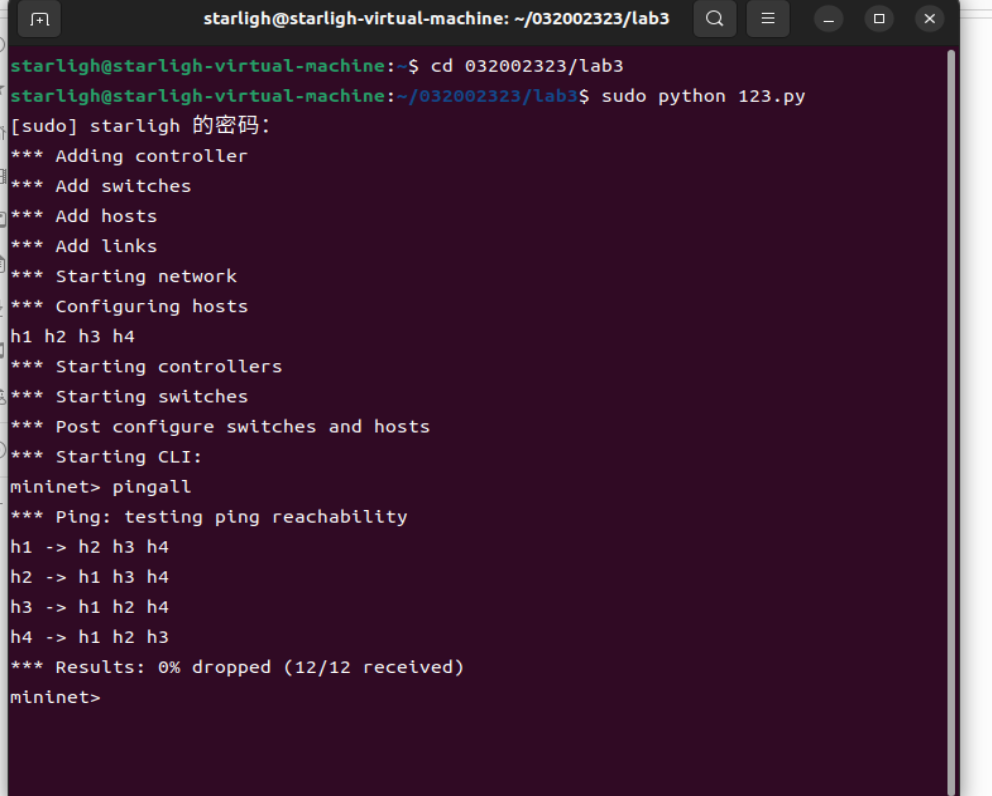
查看抓包结果,分析OpenFlow协议中交换机与控制器的消息交互过程,画出相关交互图或流程图。
.Hello
控制器6633端口(我最高能支持Open Flow1.0) ---> 交换机48098端口

交换机48098端口(我最高能支持Open Flow1.5)---> 控制器6633端口
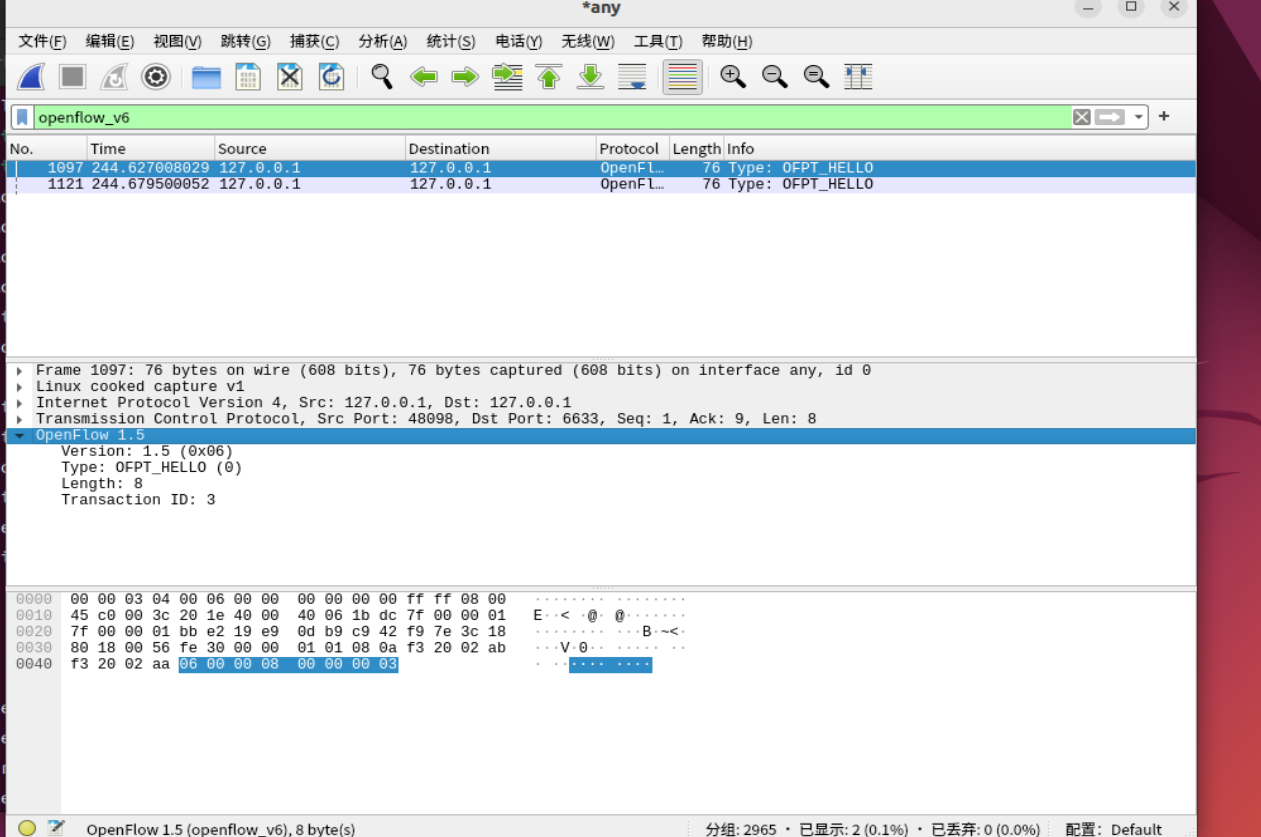
于是双方建立连接,并使用Open Flow1.0
.Features_Request
控制器6633端口(我需要你的特征信息) ---> 交换机48098端口
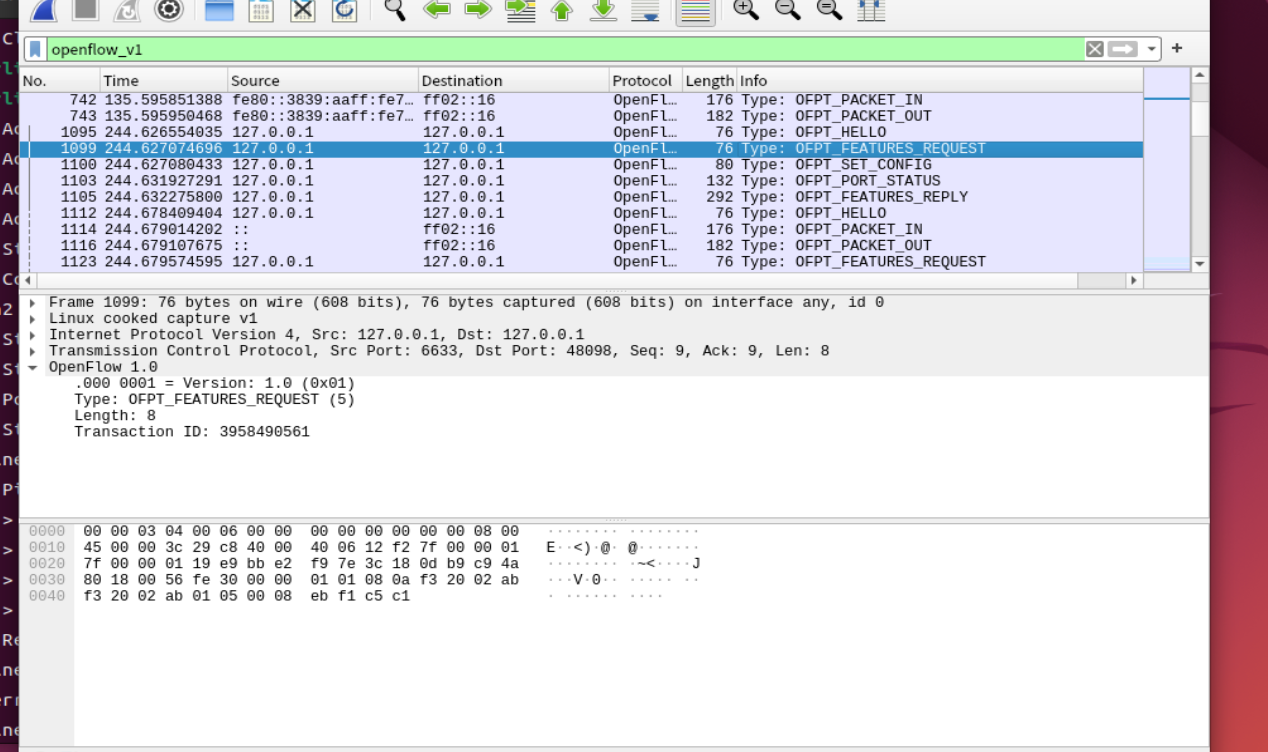
.Set_Config
控制器6633端口(请按照我给你的flag和max bytes of packet进行配置) ---> 交换机48098端口
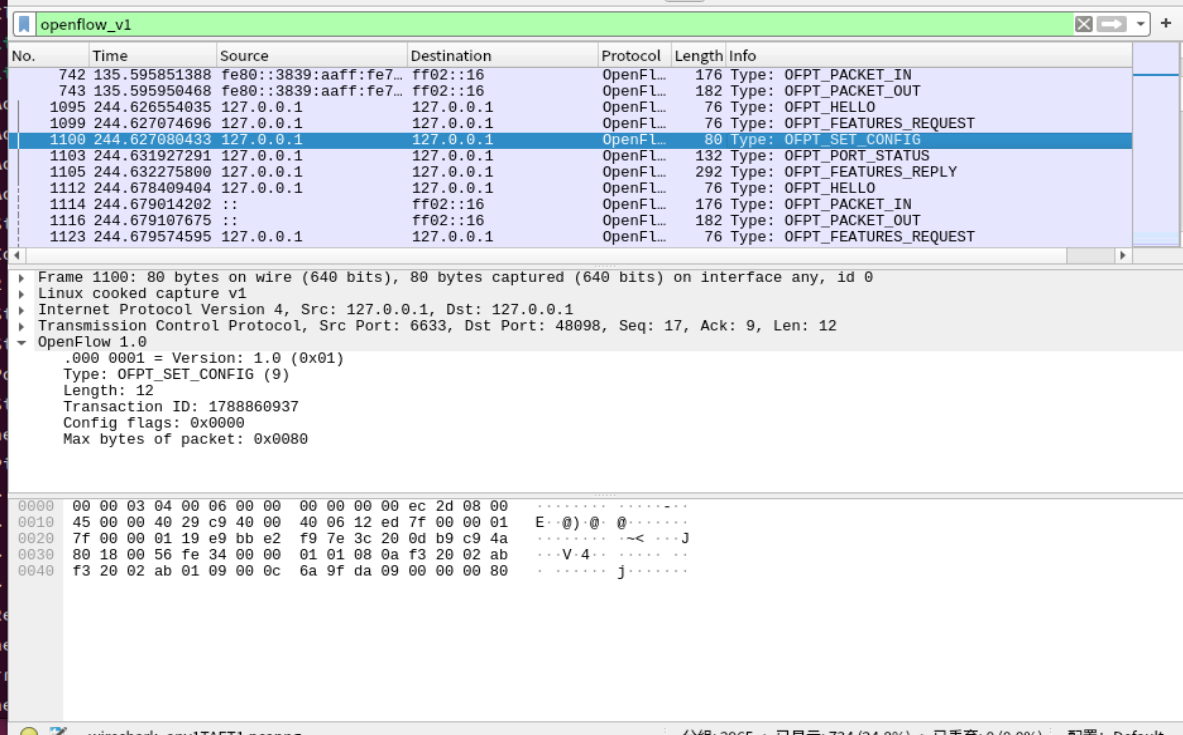
.Port_Status
当交换机端口发生变化时,告知控制器相应的端口状态
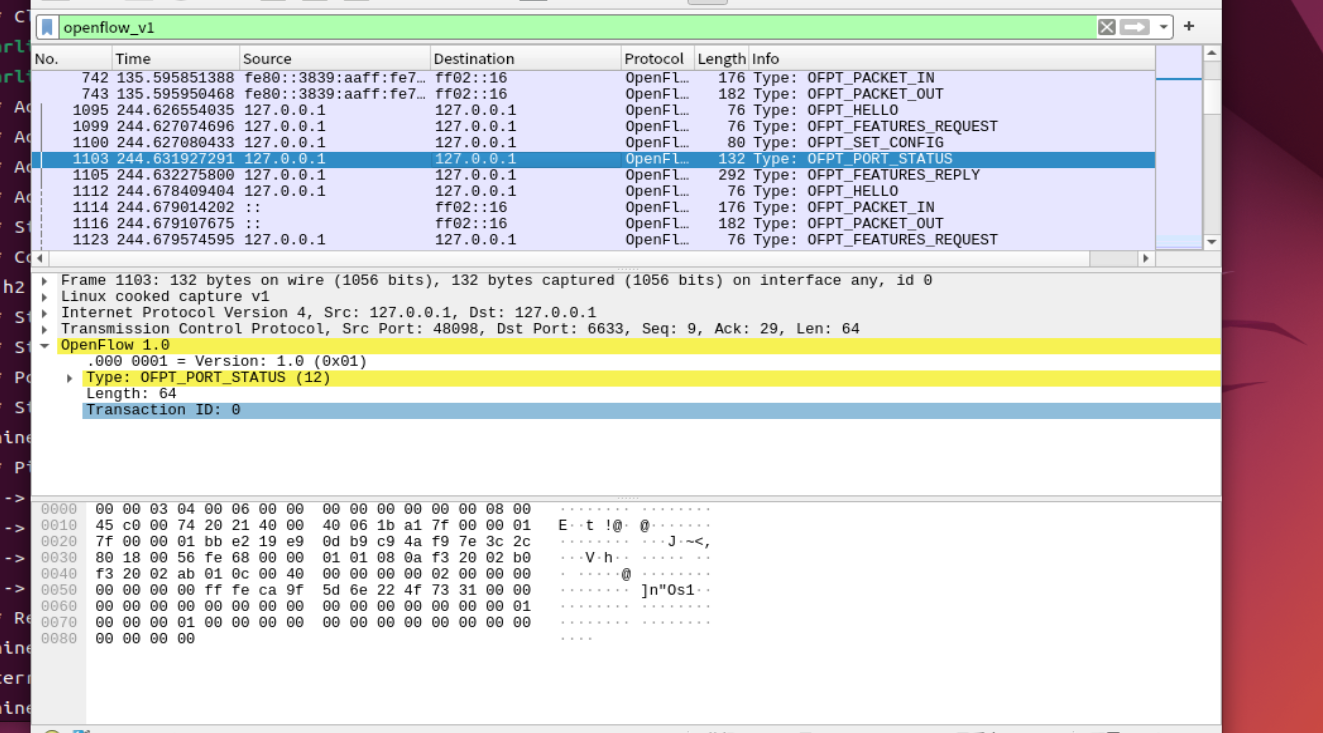
.Features_Reply
交换机48098端口(这是我的特征信息,请查收) ---> 控制器6633端口
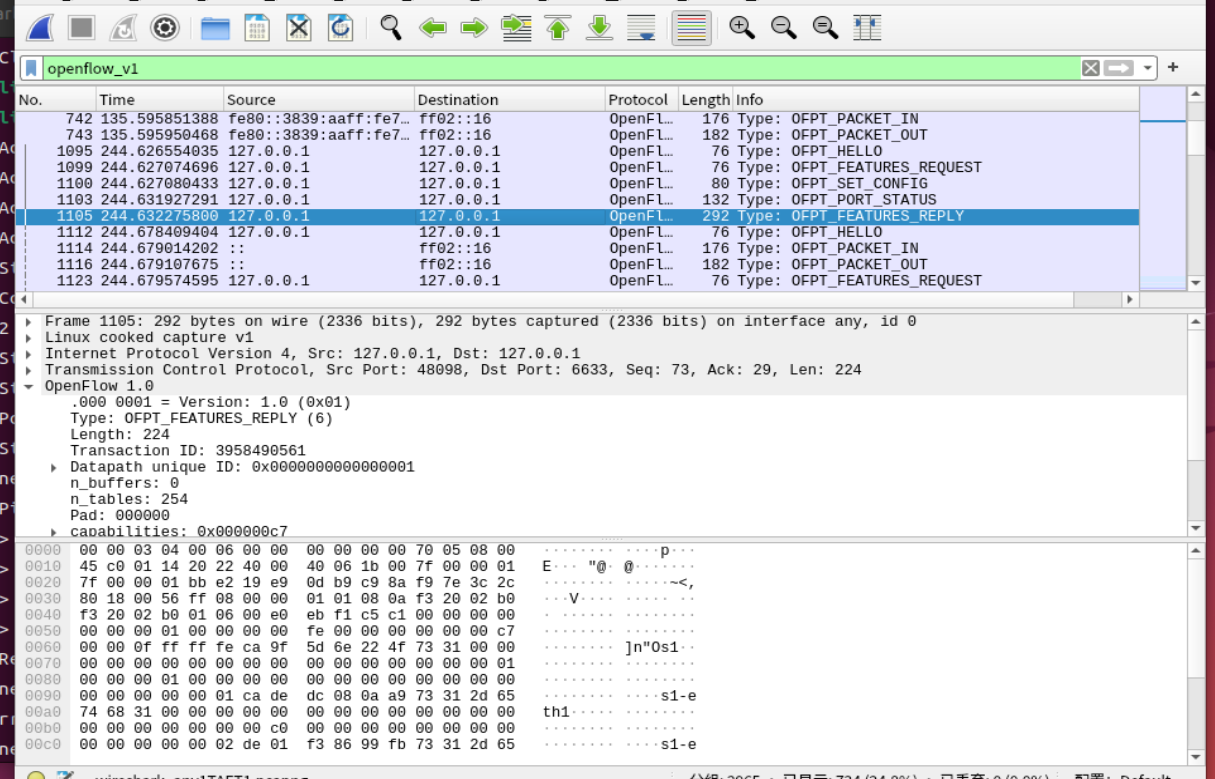
.Packet_in
交换机48098端口(有数据包进来,请指示) ---> 控制器6633端口
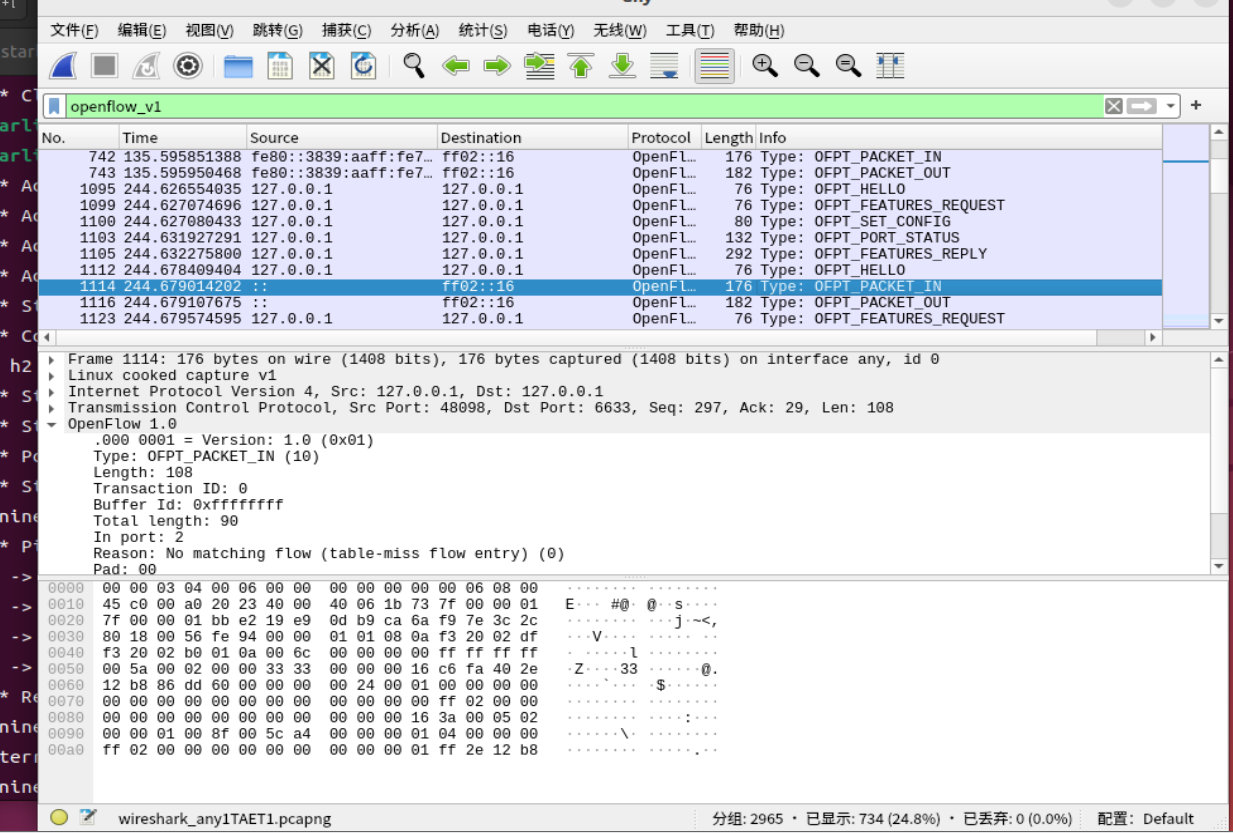
.Packet_out
控制器6633端口(请按照我给你的action进行处理) ---> 交换机48098端口

.Flow_Mod
分析抓取的flow_mode数据包,控制器通过6633端口向交换机48098端口、交换机48104端口下发流表项,指导数据的转发处理
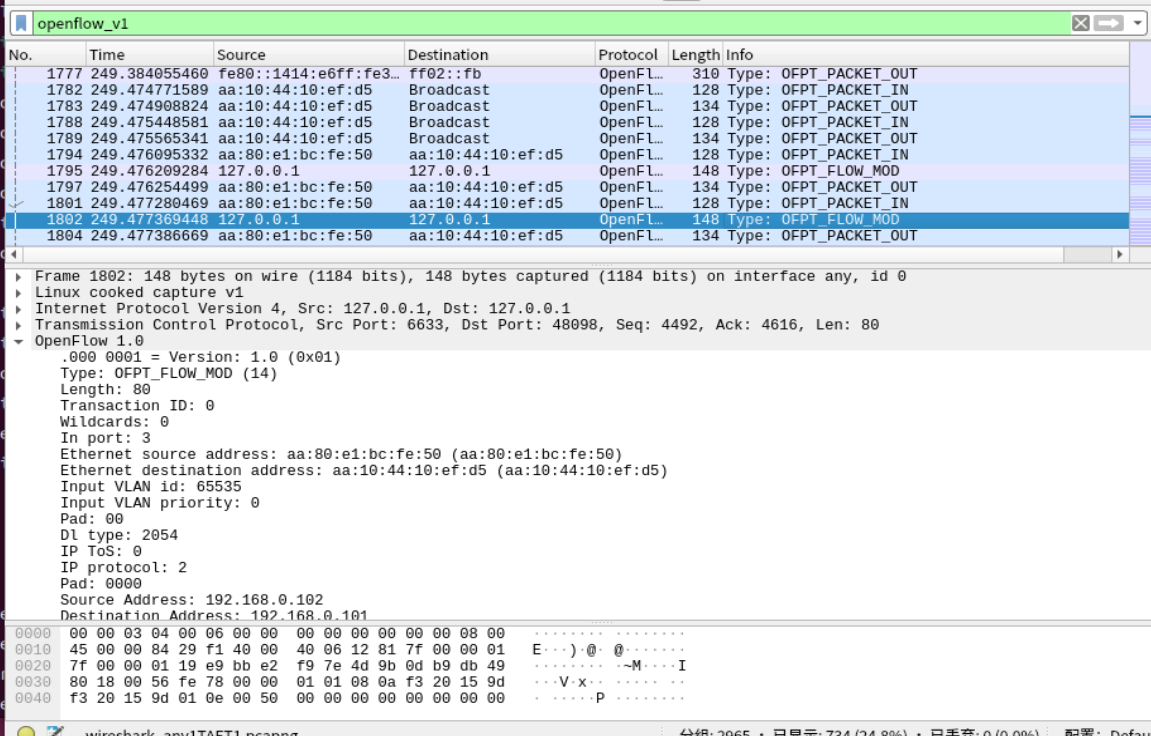
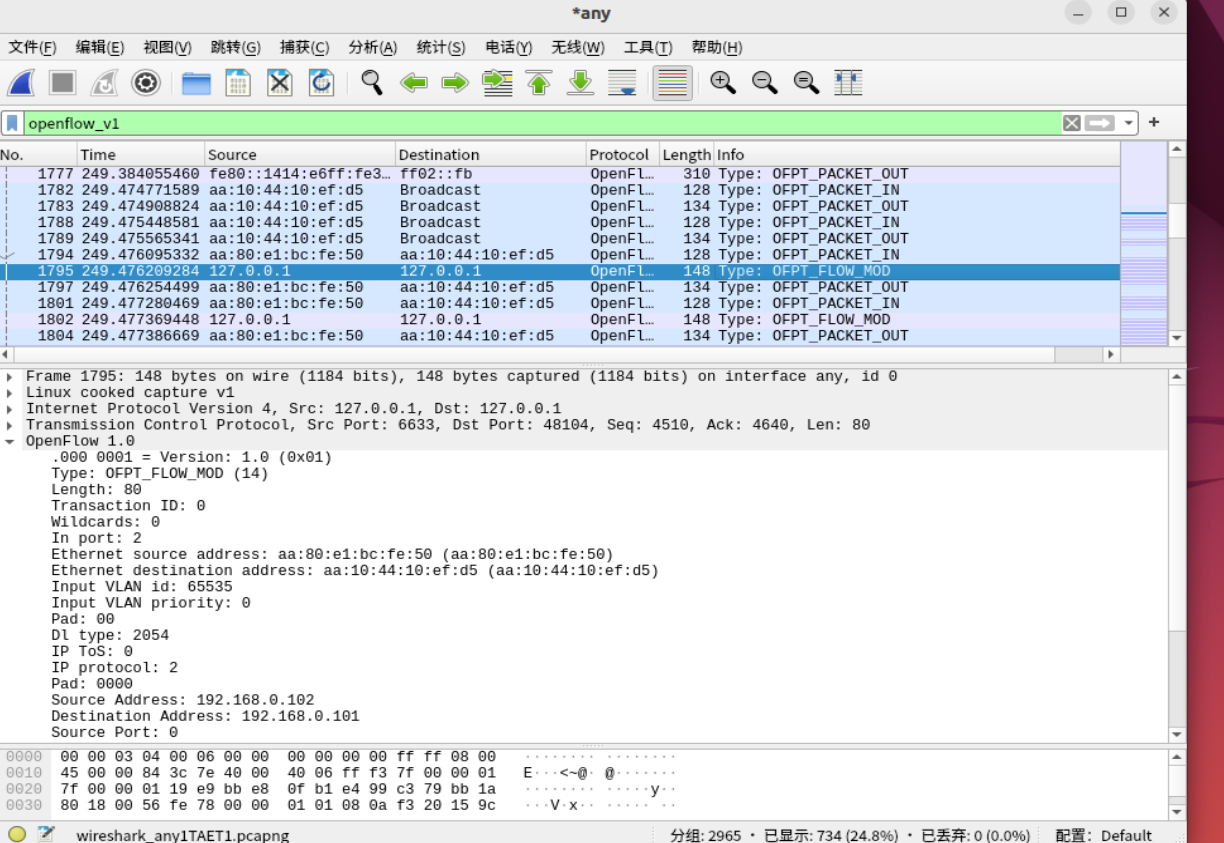
交互图

回答问题:交换机与控制器建立通信时是使用TCP协议还是UDP协议?
(Transmission Control Protocol)TCP
(二)进阶要求
将抓包基础要求第2步的抓包结果对照OpenFlow源码,了解OpenFlow主要消息类型对应的数据结构定义。
Hello

/* Header on all OpenFlow packets. */
struct ofp_header {
uint8_t version; /* OFP_VERSION. */
uint8_t type; /* One of the OFPT_ constants. */
uint16_t length; /* Length including this ofp_header. */
uint32_t xid; /* Transaction id associated with this packet.
Replies use the same id as was in the request
to facilitate pairing. */
};
Features_Request

参数格式与Hello一致
Set_Config

/* Switch configuration. */
struct ofp_switch_config {
struct ofp_header header;
uint16_t flags; /* OFPC_* flags. */
uint16_t miss_send_len; /* Max bytes of new flow that datapath should
send to the controller. */
};
OFP_ASSERT(sizeof(struct ofp_switch_config) == 12);
Port_Status

struct ofp_port_status {
struct ofp_header header;
uint8_t reason; /* One of OFPPR_*. */
uint8_t pad[7]; /* Align to 64-bits. */
struct ofp_phy_port desc;
};
Features_Reply

struct ofp_header header;
uint64_t datapath_id; /* Datapath unique ID. The lower 48-bits are for
a MAC address, while the upper 16-bits are
implementer-defined. */
uint32_t n_buffers; /* Max packets buffered at once. */
uint8_t n_tables; /* Number of tables supported by datapath. */
uint8_t pad[3]; /* Align to 64-bits. */
/* Features. */
uint32_t capabilities; /* Bitmap of support "ofp_capabilities". */
uint32_t actions; /* Bitmap of supported "ofp_action_type"s. */
/* Port info.*/
struct ofp_phy_port ports[0]; /* Port definitions. The number of ports
is inferred from the length field in
the header. */
};
Packet_in

交换机查找流表,发现没有匹配条目,但是这种包没有抓到过
/* Why is this packet being sent to the controller? */
enum ofp_packet_in_reason {
OFPR_NO_MATCH, /* No matching flow. */
OFPR_ACTION /* Action explicitly output to controller. */
};
有匹配条目,对应的action是OUTPUT=CONTROLLER,固定收到向控制器发送包
/* Packet received on port (datapath -> controller). */
struct ofp_packet_in {
struct ofp_header header;
uint32_t buffer_id; /* ID assigned by datapath. */
uint16_t total_len; /* Full length of frame. */
uint16_t in_port; /* Port on which frame was received. */
uint8_t reason; /* Reason packet is being sent (one of OFPR_*) */
uint8_t pad;
uint8_t data[0]; /* Ethernet frame, halfway through 32-bit word,
so the IP header is 32-bit aligned. The
amount of data is inferred from the length
field in the header. Because of padding,
offsetof(struct ofp_packet_in, data) ==
sizeof(struct ofp_packet_in) - 2. */
};
OFP_ASSERT(sizeof(struct ofp_packet_in) == 20);
Packet_out

/* Send packet (controller -> datapath). */
struct ofp_packet_out {
struct ofp_header header;
uint32_t buffer_id; /* ID assigned by datapath (-1 if none). */
uint16_t in_port; /* Packet's input port (OFPP_NONE if none). */
uint16_t actions_len; /* Size of action array in bytes. */
struct ofp_action_header actions[0]; /* Actions. */
/* uint8_t data[0]; */ /* Packet data. The length is inferred
from the length field in the header.
(Only meaningful if buffer_id == -1.) */
};
Flow_Mod

/* Flow setup and teardown (controller -> datapath). */
struct ofp_flow_mod {
struct ofp_header header;
struct ofp_match match; /* Fields to match */
uint64_t cookie; /* Opaque controller-issued identifier. */
/* Flow actions. */
uint16_t command; /* One of OFPFC_*. */
uint16_t idle_timeout; /* Idle time before discarding (seconds). */
uint16_t hard_timeout; /* Max time before discarding (seconds). */
uint16_t priority; /* Priority level of flow entry. */
uint32_t buffer_id; /* Buffered packet to apply to (or -1).
Not meaningful for OFPFC_DELETE*. */
uint16_t out_port; /* For OFPFC_DELETE* commands, require
matching entries to include this as an
output port. A value of OFPP_NONE
indicates no restriction. */
uint16_t flags; /* One of OFPFF_*. */
struct ofp_action_header actions[0]; /* The action length is inferred
from the length field in the
header. */
};
(三)实验报告
实验总结:本次实验通过wireshark了解openflow协议数据交互过程,学会了通过过滤器输入open flow_v1过滤数据等,收获颇丰


 浙公网安备 33010602011771号
浙公网安备 33010602011771号